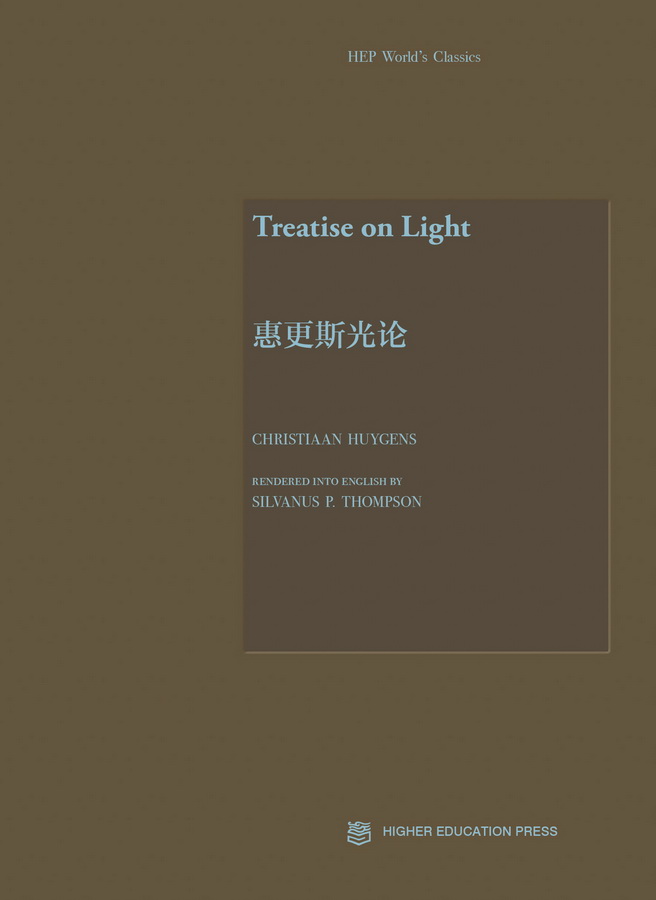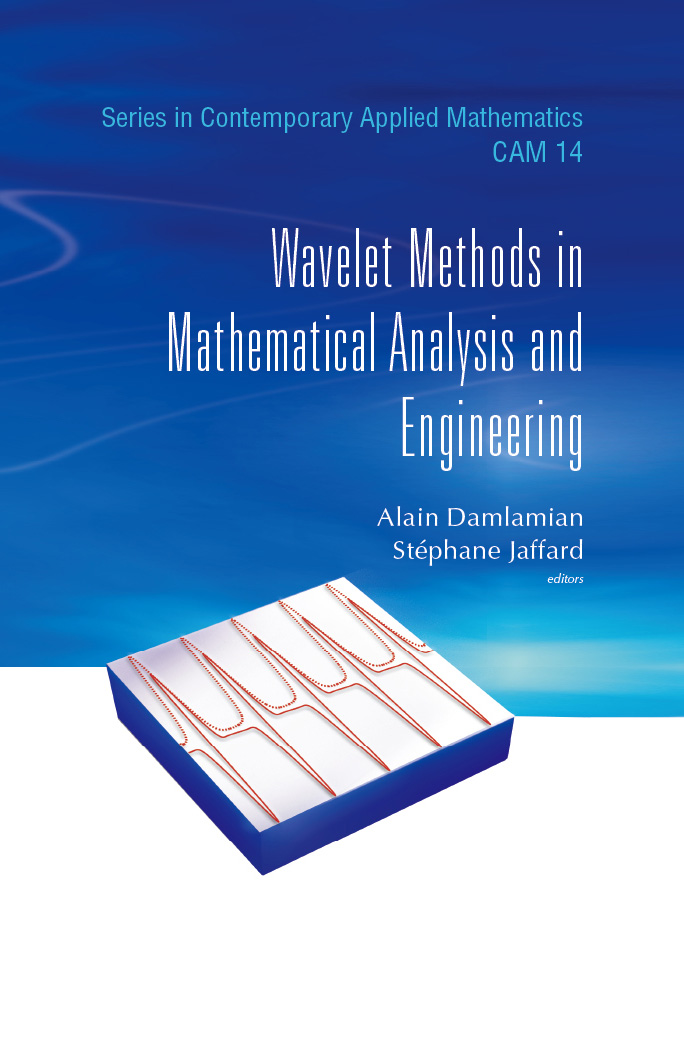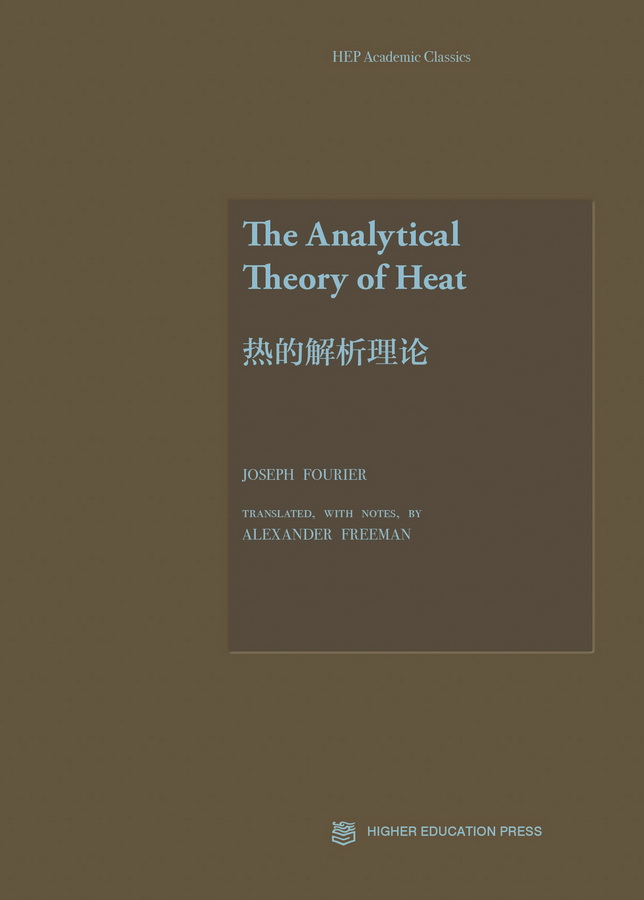- 高等教育出版社
- 9787040453171
- 1版
- 227378
- 46254935-3
- 精装
- 16开
- 2016-05
- 130
- 93
- 理学
- 物理学
- O4
- 物理类
- 本科 研究生及以上
本书出版于1690年,是惠更斯光学研究的重要著作,副标题是“其中解释了反射和折射,尤其是冰岛水晶的奇异折射发生的各种原因”。主要介绍了惠更斯所建立的光的波动学说,建立了著名的惠更斯原理。惠更斯原理是近代光学的一个重要基本理论。光的波动学说,打破了当时流行的光的微粒学说,在光学科学发展中产生了重大的影响。本书是根据Silvanus P. Thompson的1912年英译本重排。
前辅文
CHAP. I. On Rays Propagated in Straight Lines.
That Light is produced by a certain movement.
That no substance passes from the luminous object to the eyes.
That Light spreads spherically almost as Sound does.
Whether Light takes time to spread.
Experience seeming to prove that it passes instantaneously.
Experience proving that it takes time.
How much its speed is greater than that of Sound.
In what the emission of Light differs from that of Sound.
That it is not the same medium which serves for Light and Sound.
How Sound is propagated.
How Light is propagated.
Detailed Remarks on the propagation of Light.
Why Rays are propagated only in straight lines.
How Light coming in different directions can cross itself.
CHAP. II. On Reflexion.
Demonstration of equality of angles of incidence and reflexion.
Why the incident and reflected rays are in the same plane perpendicular to the reflecting surface.
That it is not needful for the reflecting surface to be perfectly flat to attain equality of the angles of incidence and reflexion.
CHAP. III. On Refraction.
That bodies may be transparent without any substance passing through them.
Proof that the ethereal matter passes through transparent bodies.
How this matter passing through can render them transparent.
That the most solid bodies in appearance are of a very loose texture.
That Light spreads more slowly in water and in glass than in air.
Third hypothesis to explain transparency, and the retardation which Light suffers.
On that which makes bodies opaque.
Demonstration why Refraction obeys the known proportion of Sines.
Why the incident and refracted Rays produce one another reciprocally.
Why Reflexion within a triangular glass prism is suddenly augmented when
the Light can no longer penetrate.
That bodies which cause greater Refraction also cause stronger Reflexion.
Demonstration of the Theorem of Mr. Fermat.
CHAP. IV. On the Refraction of the Air.
That the emanations of Light in the air are not spherical.
How consequently some objects appear higher than they are.
How the Sun may appear on the Horizon before he has risen.
That the rays of light become curved in the Air of the Atmosphere, and what effects this produces.
CHAP. V. On the Strange Refraction of Iceland Crystal.
That this Crystal grows also in other countries.
Who first-wrote about it.
Description of Iceland Crystal; its substance, shape, and properties.
That it has two different Refractions.
That the ray perpendicular to the surface suffers refraction, and that some rays inclined to the surface pass without suffering refraction.
Observation of the refractions in this Crystal.
That there is a Regular and an Irregular Refraction.
The way of measuring the two Refractions of Iceland Crystal.
Remarkable properties of the Irregular Refraction.
Hypothesis to explain the double Refraction.
That Rock Crystal has also a double Refraction.
Hypothesis of emanations of Light, within Iceland Crystal, of spheroidal form, for the Irregular Refraction.
How a perpendicular ray can suffer Refraction.
How the position and form of the spheroidal emanations in this Crystal can be defined.
Explanation of the Irregular Refraction by these spheroidal emanations.
Easy way to find the Irregular Refraction of each incident ray.
Demonstration of the oblique ray which traverses the Crystal without being refracted.
Other irregularities of Refraction explained.
That an object placed beneath the Crystal appears double, in two images of different heights.
Why the apparent heights of one of the images change on changing the position of the eyes above the Crystal.
Of the different sections of this Crystal which produce yet other refractions,and confirm all this Theory.
Particular way of polishing the surfaces after it has been cut.
Surprising phenomenon touching the rays which pass through two separated pieces; the cause of which is not explained.
Probable conjecture on the internal composition of Iceland Crystal, and of what figure its particles are.
Tests to confirm this conjecture.
Calculations which have been supposed in this Chapter.
CHAP. VI. On the Figures of the Transparent Bodies Which Serve for Refraction and for Reflexion.
General and easy rule to find these Figures.
Invention of the Ovals of Mr. Des Cartes for Dioptrics.
How he was able to find these Lines.
Way of finding the surface of a glass for perfect refraction, when the other surface is given.
Remark on what happens to rays refracted at a spherical surface.
Remark on the curved line which is formed by reflexion in a spherical concave mirror.
INDEX.









